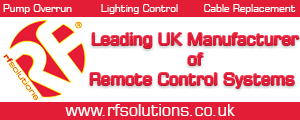A
amberleaf
“ Rcd's “
Fire detection circuits must be supplied independently of other circuits and not protected by an Rcd protecting multiple circuits. 560.7.1 All circuits in a bath shower room must be protected by a 30mA RCD. P166, 701.411.3.3
Where applicable an RCD notice must be fixed on or next to the CCU 514.12.2 An RCD should not be used as a main switch 314.2 If the maximum Zs values for a circuit in a TN systems cannot be met, the circuit may be protected by a 30mA RCD. 531.3.1
If the maximum Zs values for a TN systems cannot be met, the installation may be protected by an 100mA RCD and treated as a TT systems . 531.3.1 : 411.5.1 : 411.5.2 : 411.5.3
Unless specifically labelled or suitably identified, all 13A socket outlets must be protected by a 30mA Rcd. 411.3.3
In a TN systems , the part of a lighting circuit in a bath or shower room is required to be 30mA RCD protected. 411.3.3 , 701.411.3.3
Where a cable is buried in a wall or partition at a depth of less than 50mm on either side it must be sufficiently mechanically protected against penetration OR RCD protected AND installed either horizontally within 150mm of the top of the wall or vertically within 150mm of the angle formed where two walls meet or run horizontally or vertically to an accessory, luminaire or CCU 522.6.6 , 522.6.7 . This applies to a cable in a partition constructed using metallic parts other than fixings irrespective of the cable depth. 522.6.8
Surface run cables do not require RCD protection. OSG p22
A single RCD protecting a TT systems must be installed at the origin of the installation unless the part of the system between the origin and the RCD fulfils the requirements for protection by Class 11 equipment or equivalent insulation 531.4.1
All Electrical equipment must be accessible for operation , inspection & testing maintenance and repair. 132.12
Rcd Test Procedure
Many RCD test meters have a facility where tests can be carried out during the positive or negative half of the supply cycle. For tests 1 & 2 the RCD operating time to be recorded is the longer of the two measured during the half cycle tests.
DO NOT press the test button on the RCD before testing as this can temporarily reset a faulty RCD
Test 1
Adjust the current setting on the test meter to 100% of the rated trip current of the RCD and perform a test. A general purpose BS4293 RCD should operate within 200mS . A general purpose BS-61008 RCD or RCBO to BS-61009 should operate within 300ms
Test 2
An RCD provided for Basic Protection should have a rated TRIP current not exceeding 30mA If the RCD is rated at 30mA , adjust the current setting on the test meter to 150ma ( x5 ) and perform a test. The RCD must operate in a time not exceeding 40mS.
Test 3
Adjust the current setting on the test meter to 50% of the RCD trip current and perform a test. The RCD should not operate within 2 seconds
The Test Button : Finally operate the RCD by pressing its test button
Fire detection circuits must be supplied independently of other circuits and not protected by an Rcd protecting multiple circuits. 560.7.1 All circuits in a bath shower room must be protected by a 30mA RCD. P166, 701.411.3.3
Where applicable an RCD notice must be fixed on or next to the CCU 514.12.2 An RCD should not be used as a main switch 314.2 If the maximum Zs values for a circuit in a TN systems cannot be met, the circuit may be protected by a 30mA RCD. 531.3.1
If the maximum Zs values for a TN systems cannot be met, the installation may be protected by an 100mA RCD and treated as a TT systems . 531.3.1 : 411.5.1 : 411.5.2 : 411.5.3
Unless specifically labelled or suitably identified, all 13A socket outlets must be protected by a 30mA Rcd. 411.3.3
In a TN systems , the part of a lighting circuit in a bath or shower room is required to be 30mA RCD protected. 411.3.3 , 701.411.3.3
Where a cable is buried in a wall or partition at a depth of less than 50mm on either side it must be sufficiently mechanically protected against penetration OR RCD protected AND installed either horizontally within 150mm of the top of the wall or vertically within 150mm of the angle formed where two walls meet or run horizontally or vertically to an accessory, luminaire or CCU 522.6.6 , 522.6.7 . This applies to a cable in a partition constructed using metallic parts other than fixings irrespective of the cable depth. 522.6.8
Surface run cables do not require RCD protection. OSG p22
A single RCD protecting a TT systems must be installed at the origin of the installation unless the part of the system between the origin and the RCD fulfils the requirements for protection by Class 11 equipment or equivalent insulation 531.4.1
All Electrical equipment must be accessible for operation , inspection & testing maintenance and repair. 132.12
Rcd Test Procedure
Many RCD test meters have a facility where tests can be carried out during the positive or negative half of the supply cycle. For tests 1 & 2 the RCD operating time to be recorded is the longer of the two measured during the half cycle tests.
DO NOT press the test button on the RCD before testing as this can temporarily reset a faulty RCD
Test 1
Adjust the current setting on the test meter to 100% of the rated trip current of the RCD and perform a test. A general purpose BS4293 RCD should operate within 200mS . A general purpose BS-61008 RCD or RCBO to BS-61009 should operate within 300ms
Test 2
An RCD provided for Basic Protection should have a rated TRIP current not exceeding 30mA If the RCD is rated at 30mA , adjust the current setting on the test meter to 150ma ( x5 ) and perform a test. The RCD must operate in a time not exceeding 40mS.
Test 3
Adjust the current setting on the test meter to 50% of the RCD trip current and perform a test. The RCD should not operate within 2 seconds
The Test Button : Finally operate the RCD by pressing its test button








